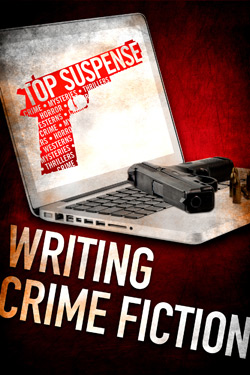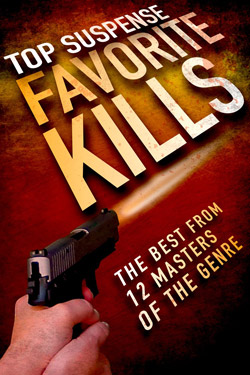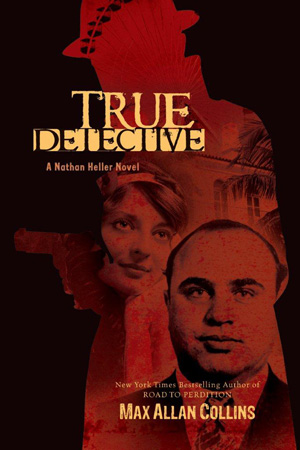Every now and then somebody puts Elmore Leonard’s ten rules of writing in a magazine column or up on a blog, and a lot of people rave about what good advice it is. The best advice I can offer writers is not to listen to advice from other writers.
Just the same, here are Leonard’s rules followed by my take on each.
1. Never open a book with weather.
An opening describing weather can create mood and atmosphere. See the first chapter of ONE LONELY NIGHT.
2. Avoid prologues.
Prologues can be effective, as for example when the first chapter takes place some years later and the prologue sets up back story. A prologue can (a) suggest a certain sweep to the narrative, and often (b) sets up something that will be paid off later.
3. Never use a verb other than “said” to carry dialogue.
“Said” is the preferred verb for carrying dialogue, but an occasional specific verb – like “insisted” or “demanded,” when the dialogue itself isn’t suggestive – can break things up a little. Also, “asked” is perfectly acceptable and even preferable for dialogue that poses a question.
4. Never use an adverb to modify the verb “said.”
Said can be effectively aided by an adverb when the dialogue itself doesn’t convey the tone. The suggestion that the tone should be inherent in the words spoken by the character doesn’t acknowledge the variation between characters and/or the mood of a character. (“I love you,” he said hatefully. “I love you,” she said sarcastically.)
Leonard’s general dislike of adverbs takes to the extreme the common sense notion that adverbs should be used sparingly. Better to choose verbs strong enough not to require an adverb (which is why “said” sometimes is not enough). Sometimes an adverb provides just the right seasoning.
5. Keep your exclamation points under control. You are allowed no more than two or three per 100,000 words of prose.
Exclamation points should be used sparingly, but the notion of limiting yourself in the way Leonard suggests makes little sense, unless he’s just being cute. Any story, and its needs, will determine how many exclamation points you might use. You might use none. You might use twenty.
6. Never use the words “suddenly” or “all hell broke loose.”
“All hell broke loose” should be avoided as a cliche, but not necessarily in dialogue, because characters are allowed to use cliches in their speech, particularly as a point of characterization. While “suddenly” should be used sparingly, instances where it’s useful do turn up (“Suddenly he knew he was a fool.”).
By the way, if I dropped the adverb “sparingly” from the previous sentence, the sentence would advise the use of the word “suddenly.”
7. Use regional dialect, patois, sparingly.
This would depend on the story and the characters therein. I think we can agree Mark Twain did all right with Huckleberry Finn.
By the way, Leonard just used an adverb again (“sparingly”).
8. Avoid detailed descriptions of characters.
A typical Leonard “rule” that is fine for him, because it’s part of his style and a preference he developed over years of writing (and reading). It derives chiefly from Hemingway, a writer he admires, and screenwriting, a reductive form Leonard has practiced through most of his career. You omit detailed character description in a screenplay not as an artistic choice, but because producers don’t want to limit casting possibilities.
Leonard’s notion that readers should essentially decide what a character looks like based upon dialogue and other action strikes me as absurd or even lazy – often physical characteristics are at odds with behavior. Like the description of a room, clothing reveals character. Reporting grooming, age, weight, height, and other physical aspects of characters is a vital part of the writer’s tool kit.
9. Don’t go into great detail describing places and things.
Again, this borders on laziness and puts onto the reader responsibilities that are rightly the author’s. Of course, “great detail” is a subjective term, and I would agree that one shouldn’t overdo. But that is according to the taste and technique of the individual writer.
10. Try to leave out the parts that readers tend to skip.
Write well and they won’t skip anything. If they have ADD, let them go to You Tube for their entertainment.
FINAL THOUGHTS:
Elmore Leonard is a terrific and distinctive writer. He developed these rules for himself and no doubt means well sharing them. But you should follow his rules only if you want to write like Elmore Leonard. And there seems to be an Elmore Leonard out there already writing perfectly good Elmore Leonard novels.
I like Elmore Leonard’s writing very much. But wouldn’t the world of books be boring if everybody wrote like him?
* * *
The Top Suspense group (of which I’m a part) has a new e-book anthology out, FAVORITE KILLS. The theme is stories that were either award winners or otherwise were successful for authors. My contribution is the Quarry story, “A Matter of Principal,” which launched both the new cycle of Hard Case Crime Quarry novels and the Quarry movie “The Last Lullaby.” Read about the new anthology here.
I finished SEDUCTION OF THE INNOCENT last Friday (Barb and I took Saturday and Sunday off with a Chicago getaway). I say “finished,” but I will be re-reading today and tomorrow, looking typos and tweaking. Should be in Charles Ardai’s hands by Wednesday.
M.A.C.
[Quick note from Nate: ANGEL IN BLACK is on sale for the Kindle through the end of the month. Don’t miss it!]


